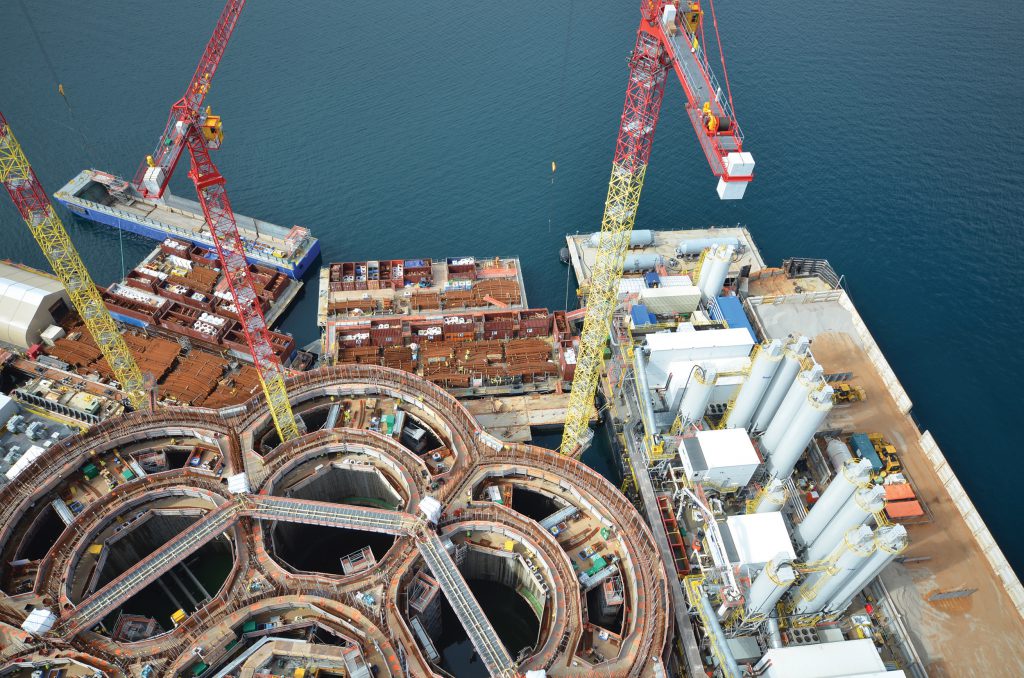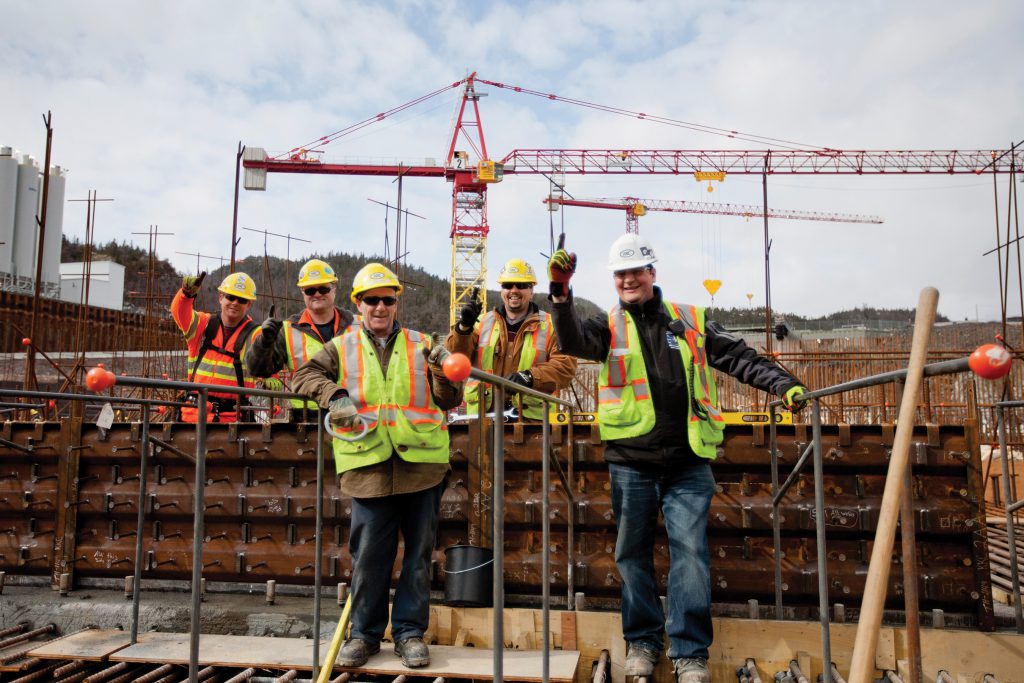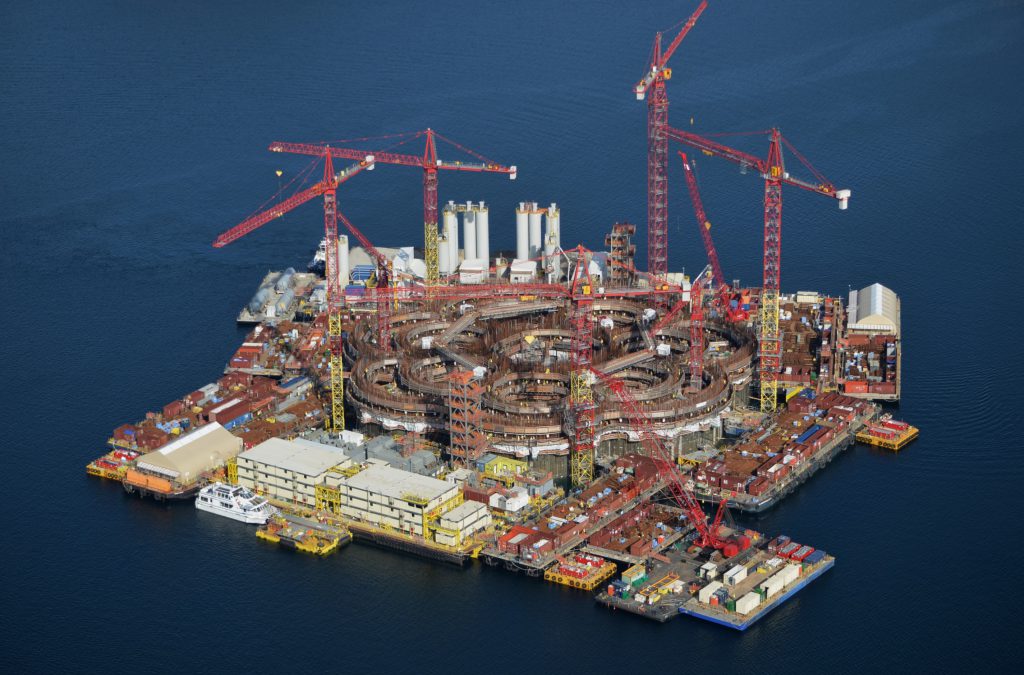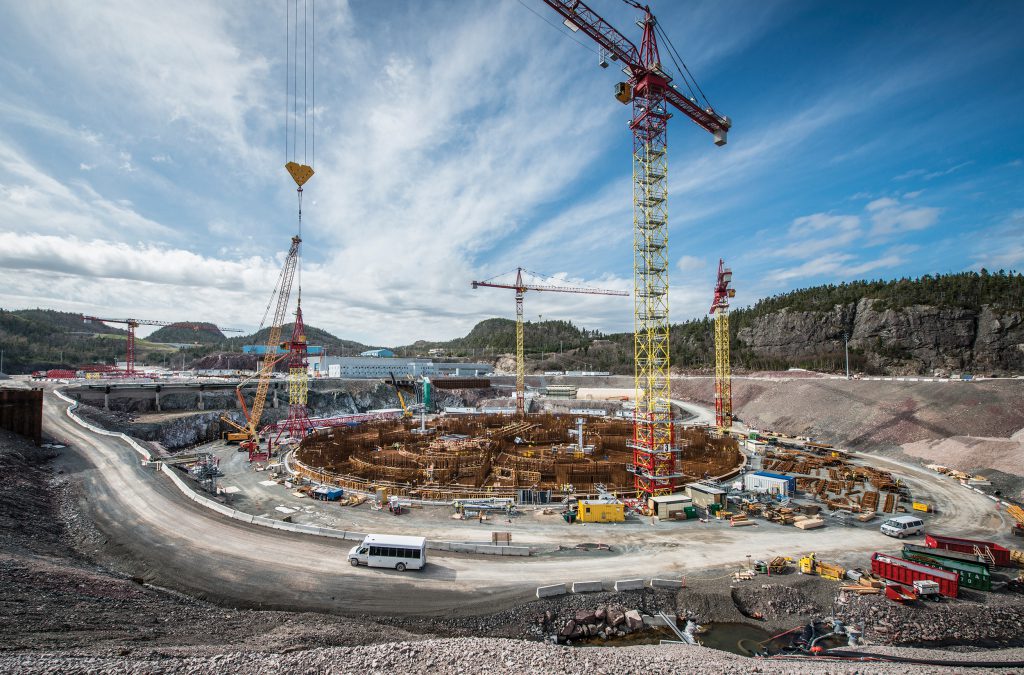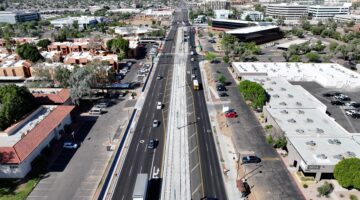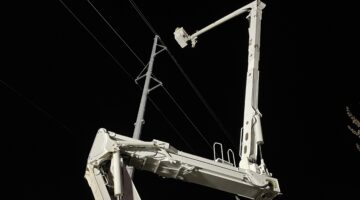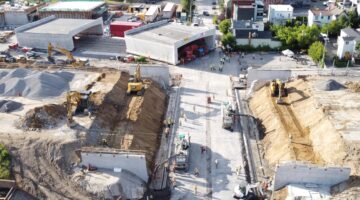In Newfoundland, Canada, there’s an enormous effort underway to build the Hebron oil platform.
Destined for the Grand Banks in the North Atlantic, approximately 350 kilometers (217 miles) from the Newfoundland’s capital city of St. John’s, the completed Hebron structure will be able to produce oil in one of the harshest environments in North America. It’s designed to resist iceberg impacts and will have the capacity to store up to 1.2 million barrels of oil.
Kiewit is a significant player in Hebron’s construction, completing related projects at locations around the province. With experience in the offshore industry that includes another platform built in Newfoundland — Hibernia in the 1990s — Kiewit continues to make progress at Hebron, one of the company’s largest projects to date.
Setting the stage
The Hebron oil field is estimated to hold more than 700 million barrels of recoverable resources. In 2011, construction began on a stand-alone, concrete gravity based structure (GBS). Work continued in 2013 on the topsides, which eventually will be mated with the GBS to form the finished Hebron platform for ExxonMobil Canada Properties and its partners, including the province of Newfoundland and Labrador.
The largest component of Kiewit’s work on Hebron is the GBS, being built by the partnership Kiewit-Kvaerner Contractors (KKC). Kiewit and Kvaerner, a Norwegian company, also worked together 20 years ago on the Hibernia GBS at the same construction site. The Hibernia project was the first GBS project to be completed in Newfoundland and Labrador.
“Kvaerner are the experts in GBS technology with more than 20 GBS projects around the world. With our more than 130-year history of construction experience in North America, this truly is a world-class team at Hebron,” said KKC Construction Manager Kevin Hughes.
“Working with Kiewit in the past, I’ve always been impressed by the company culture and especially the commitment to safety,” said Astor Nyborg, KKC project director.
“We knew each team brought a lot of things it did well to the table,” Hughes said. “Our teams complement each other well. Our partner’s technical strengths and experience with GBS platforms coupled with Kiewit’s organizational strengths and resources provide us with the capacity to take on such a challenging project.
“We are constantly taking the best practices from both Kiewit and Kvaerner and adopting them as KKC,” he added. “To this day, we’re still learning from each other and getting better as a team.”
Getting to work
Before KKC could start building the GBS, the construction site needed to be reawakened from hibernation. Located in Bull Arm, Newfoundland, it’s the same site used during the construction of Hibernia.
“The first part of the job was to essentially wake up the site and make upgrades to what remained from Hibernia,” said KKC Installation Manager Mike Ostlund. “The site functions like a small city, so we had to make sure all the systems — sewer, water, water treatment and electrical, for example — would support operations.”
Preparations in the first year also included building a dry dock for the first phase of GBS construction. KKC built a bund wall, or cofferdam, to section off the dry dock and safely removed marine life in the area before pumping water out of the dry dock.
Construction of the GBS began in the dry dock in late 2012. On top of a base slab that covers an area almost the size of three NFL football fields, concrete was poured in phases using slip forms to make the cell walls.
The slip form process allows for a pour of concrete as formwork is raised vertically using hydraulics. Once the slip forming of the walls was complete, mechanical outfitting of the structure began.
By mid-2014, construction in the dry dock was complete. The dry dock was flooded and the bund wall removed. The GBS was then towed by tugs out to the deep water site less than a kilometer away and secured for the next phase of construction. At approximately 180 meters (590 feet), water depth at the site is nearly twice that of the offshore installation site.
Operating on a grand scale
Once the GBS arrived at the deep water site, KKC prepared for a 35-day continuous slip form concrete pour to add 44 meters (144 feet) to the GBS. This included five weeks spent assembling a floating production facility with offices, facilities, laydown areas, backup power generation on board, and a floating batch plant.
“Preparation for this enormous slip started over a year before it began,” Hughes said. “Everything from optimizing the structure for ease of construction, to the logistics of gearing up 2,800 people a day on the GBS and transporting them and materials back and forth to shore each day.”
All of the planning came to fruition in mid-September 2014, when the slip form pour began. The last batch of concrete was poured 35 days later, and the GBS had reached 71 meters (233 feet) in height.
“Finishing this slip was definitely one of the highlights of this job,” said Hughes. “Being able to complete one of the largest slip form pours in the world with an excellent safety and quality record speaks to the dedication and attention to detail of everyone — craft, staff and the client — who was a part of the engineering, planning and execution of this large operation.”
The excellent safety record on the largest slip was a direct reflection of the safety culture that has been in place and evolving since the first day of the project.
“Our key to safety success is our craft engagement and commitment to Nobody Gets Hurt,” said Dwayne Serafin, the KKC site operations manager.
“It starts with the orientation and extends to the front lines,” he said. “Our craft are always involved. That’s what has made Hebron an industry leader in safety. Our people make it personal, they care about each other, and it’s evident in the culture here.”
An island-wide effort
While KKC continues work at Bull Arm, additional Kiewit crews are building other parts of Hebron around Newfoundland.
On the west side of the island in Stephenville, part of the KKC team is fabricating mechanical outfitting and decking for the GBS. The finished materials, including mechanical piping, are then transported to Bull Arm and installed inside the center shaft of the GBS.
On the south side of the island in Marystown, Kiewit Offshore is building Hebron’s drilling support module (DSM). The DSM is a 3,200-metric-ton, four-level structure, one of four primary pieces that will make up the topsides.
On the finished platform, the outfitted DSM with its instrumentation, multitude of pumps, bulk storage and drill pipe storage will work in conjunction with the derrick equipment set module.
“The fabrication and assembly of this structure from the bottom up would not have been possible without the many Kiewit personnel involved,” said Kiewit Offshore Area Manager John Huber.
“Kiewit’s involvement embodies the teamwork philosophy we have all come to appreciate by drawing from the pool of talented people across North America. Being one of the largest modules constructed in-province, the project has allowed many Newfoundlanders and Labradorians to apply their trade on a monumental project for the province.”
Once construction of the topsides and GBS is complete, the topsides will be floated over and mated with the GBS at the Bull Arm deep water site. Everything will be integrated and tested there before it’s towed to and installed off the coast of Newfoundland, ready for first oil.
Never say never
When Hebron becomes operational in the North Atlantic, it will be a significant event in Newfoundland and Labrador, and in the careers of all the Kiewit people who have been involved on the project.
It’s what many might consider a once-in-a-career job, and one this team will never see again. But those who were at Hibernia and now are at Hebron know you should never say never.
“Being from Newfoundland, working on Hibernia was a great moment in my career,” said Seumas St. George, KKC mechanical outfitting discipline and installation lead. “To be back here again with Kiewit, working on one of the largest projects in the company’s history and one that is so important to Newfoundland, it’s incredible.”
For those who weren’t on Hibernia, but heard stories about it during their Kiewit careers, it’s just as exciting to be part of the team at Hebron.
“When I started with Kiewit in 1997 as an intern, I heard about Hibernia and always thought ‘I’d love to work on a project like that,’ but didn’t know if the opportunity would come along,” KKC General Superintendent Dan Sullivan said. “It’s been a great experience working at Hebron. I’m glad things came full circle.”
“This is a great opportunity not only for those of us here in Newfoundland, but for all of Kiewit,” said Sullivan. “The skills learned and refined just coordinating a project of this magnitude, as well as working with a world-class team, will have enormous benefits for the company now and in the future.”
